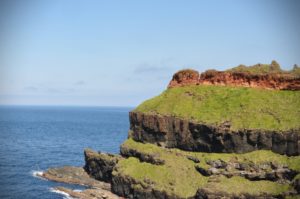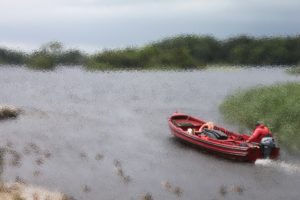Dublin is the capital of Ireland. Dublin is situated at Leinster on the Ireland’s east coast. It is next to River Liffey. The word Dublin is derived from Irish language Dubh Linn and Baile Cliath that means black pool. Dubh Linn was a lake that was used by Vikings. The river was connected to Liffey. River Liffey divides Dublin city into two the Northside and the Southside. The Northside is mostly a working class region. The thoroughfare of Dublin is found in this area as well as the O’Connell Street. The museum and theaters and the Europe largest city park are located on the Northside. The Southside is typically an upmarket area. The bohemian temple bar and Saint Stephen Green Park and the oldest university called Trinity are found in this area. The Landsdowne Road Stadium and also the oldest part of the city around the cathedral are located on the Southside. A large population in Dublin is Vikings. Dublin became the capital city of Ireland after Norman’s invasion. The city developed and became the second biggest town in the British Empire.
The population of the state is 4,757,976 as Central Statistics Office indicated in 2016. The population of both Dublin City and County is estimated to be of 1,273,069. More than 1.8 million people stay in the greater region of Dublin. The area also includes the counties of Kildare and Meat and Wicklow. The population is estimated to grow to over 2 million by 2031. People living in Dublin city are non-Irish compared to any other part of the country. English is the language spoken in Dublin. The currency used is Euro.
The Dublin city was listed among the thirty best cities in the globe by The Globalization and World Cities Research Network. The city has attraction sites like the cathedrals and historical museums as well as a variety of golf clubs and theaters. Other attraction sites include the rolling hillsides and the colorful foliage and also babbling brooks. The city is a fantastic place for travelers and tourist as Ian Andrews quoted “Dublin is a modern and ancient platform for education and administration and the arts and industry and economy.”

Dublin attracted over 3.9 million visitors from around the world in 2013. More than 100,000 tourists arrived in Dublin through ships in that year. The Guinness Storehouse is one of the Dublin’s’ tourist attraction. The storehouse is situated at St James’ Gate just outside the city center. It is an attraction about Guinness. The storehouse is a seven-floor building. The house is surrounded by a glass of atrium shaped like a pint of Guinness. The ground floor presents the beer ingredients and the founder of the company. They include water and barley and hops as well as yeast. The other five floors display the Guinness history. The advertisement includes an interactive demonstration on drinking responsibly. The last floor is the Gravity Bar that has views of entire Dublin. Other attraction includes the O’Connell Bridge in Dublin that covers the famed River Liffey. It is the only bridge in the European continent that has the same length as its width. The bridge was constructed in 1863.
The city is well-known for movies and literary. George Bernard Shaw was a dramatist and Nobel Prize winner. James Joyce is a writer of Ulysses and a poet. The city is also known for its Dracula creator Bram Stoker among others. The Number Twenty-Nine museum in Dublin showcases how the seventeen-century house looked like. The room is furnished with wall-hangings and unique paintings and also a baby nursery with old toys. The enclosed Phoenix Park contains extraordinary sights to see. The pastures of grazing animals and roaming deer in the forest and ornamental gardens and nature trails among others make it an unusual site. One cannot miss visiting The Olympia Theater. The theater features ballets and concerts and musicals and comedies and live bands among other performance. Kylemore Karting arena is a unique racing place that features hills and banked corners and comes with the skilled race team. It gives an individual the feeling of being an actual car race driver. Another site to visit is St. Stephen’s Green Park. The park has the most beautiful trees and flowers in Dublin city. Tourist can take a tour by the lake. Individuals can look at the amazing cascades scattered in the park.

Dublin was first on the list for the availability of skilled employees as reported by Brookings Global Metro Monitor in 2011. The city also has approximately 30% of the population with high level of education. Dublin has the highest number of international student studying in Ireland. The city employed over 840,000 people in 2013. The number represents more than 40% of the people working in the State.